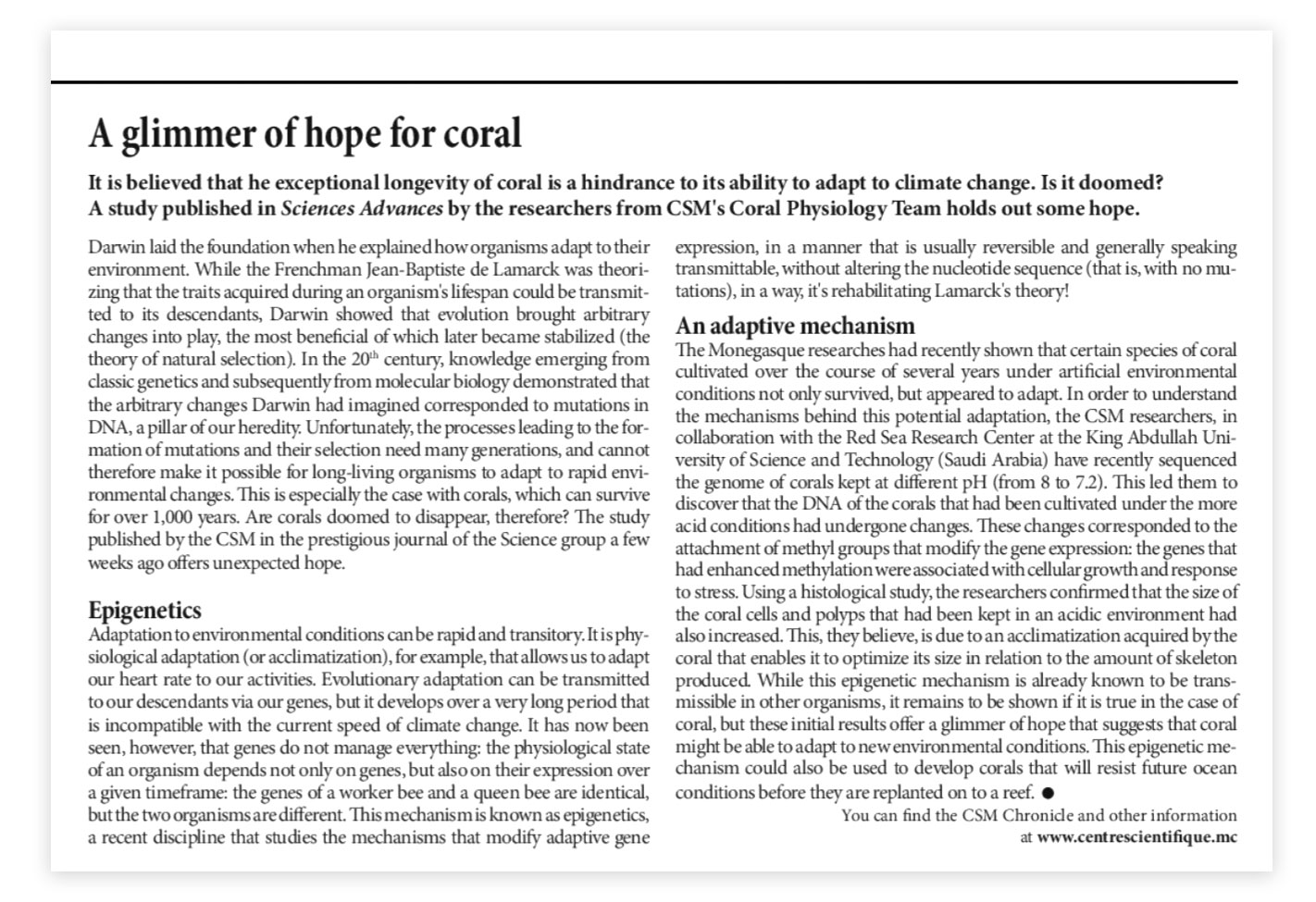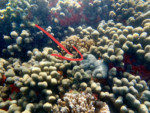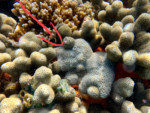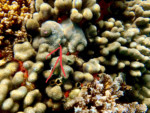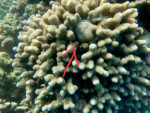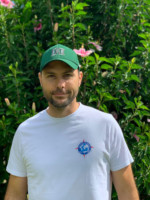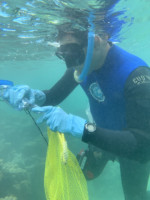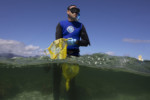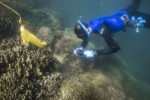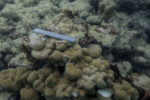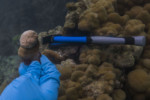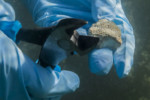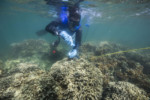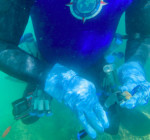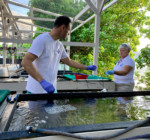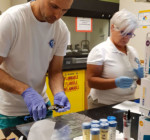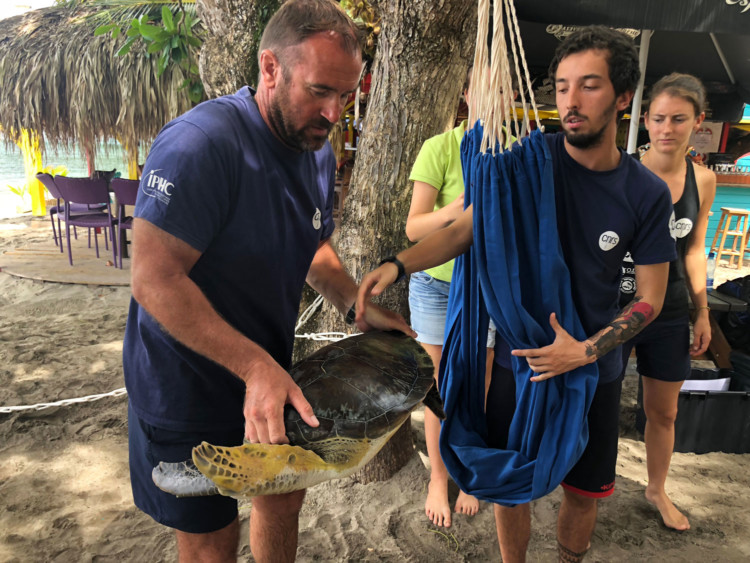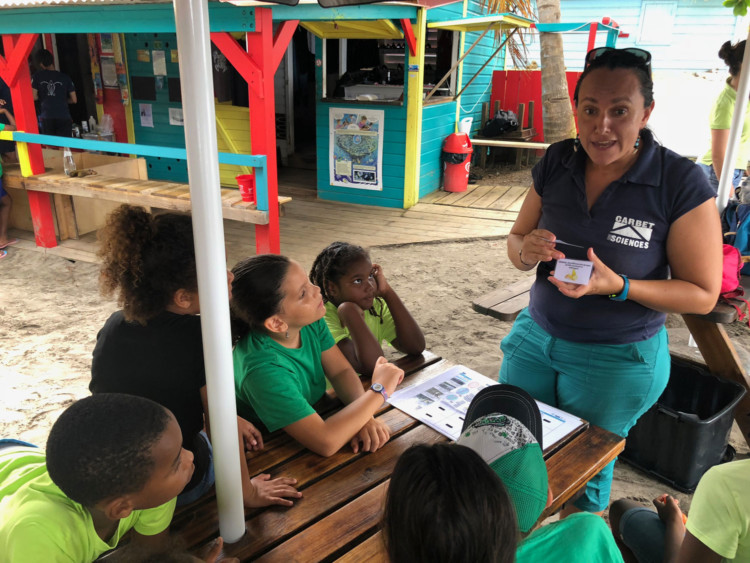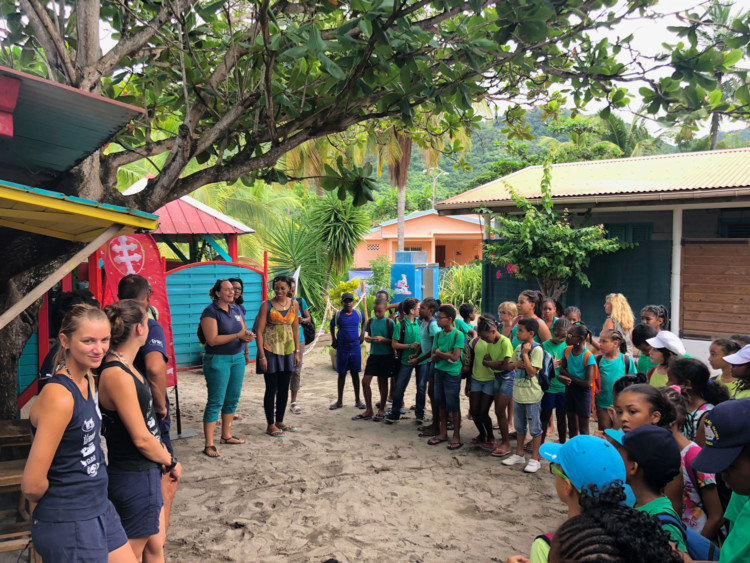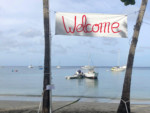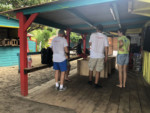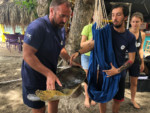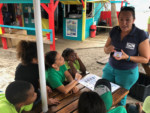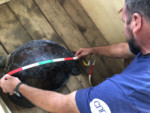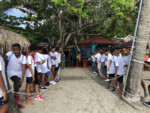These are photos taken today from our mission in Hawaii’s Kāneʻohe Bay on Moku O Loʻe Island. Each photo displays coral showing abnormal growths which may be caused by a virus, bacteria, or water temperature changes. The scientists on site from Centre Scientifique de Monaco have taken more than 100 samples from these diseased corals and will return them to their laboratory in Monaco to continue their research.
Dr. Francois Seneca is a Senior Scientist at Centre Scientifique de Monaco. He is a native of Monaco, and studied coral reefs around the world for almost 18 years before returning to work at CSM.
Seneca completed his Bachelors of Science at the University of Hawaii from 2001 – 2004. He wrote his senior thesis on abnormal growths on corals, advised by Dr. John Stimson, who was his coral reef ecology professor. His senior project, on which the thesis was based, was conducted here at HIMB.
After his undergraduate studies, Seneca returned to Monaco for an internship at CSM before attending James Cook University in Australia for his PhD in biochemistry and molecular biology. Following that, he held a post-doc position at Stanford University’s Hopkins Marine Station in Monterey Bay, California, USA where his work focused on the effects of climate change on corals. Next, he took a post-doc positions at UH’s Kewalo Marine Lab and finally at the Smithsonian Marine Station at Fort Pierce in Florida, USA.
Now, as a Senior Scientist at CSM he is working on the development of the Aiptasia sea anemone as a model for host-pathogen interactions from corals to humans.
If you are interested in Francois’ work you can fseneca@centrescientifique.mc
[vc_row][vc_column][gem_button position=”center” corner=”3″ icon_pack=”elegant” text=”Read on Big Island Now website” link=”url:http%3A%2F%2Fbigislandnow.com%2F2018%2F12%2F02%2Fscientists-study-links-between-human-and-coral-health%2F||target:%20_blank|”][vc_column_text] [/vc_column_text][/vc_column][/vc_row][vc_row][vc_column][/vc_column][/vc_row]
[/vc_column_text][/vc_column][/vc_row][vc_row][vc_column][/vc_column][/vc_row]
Dorota Czerucka and François Seneca from the Centre Scientifique de Monaco have collected 140 samples of both healthy and diseased corals in two locations.
The scientists are collecting samples of corals showing abnormal growths which could be tumors. The team is conducting research to understand the immune mechanism response given by the corals to this situation.
Our mission here in Hawaii is in collaboration with Drs. Dorota Czerucka and Francois Seneca from Centre Scientifique de Monaco (CSM). This team is working on a project on the development of the Aiptasia sea anemone as a model for host pathogen interactions from corals to humans. Part of this process is to collect samples from coral colonies here in Hawaii that are showing abnormal growths and attempt to understand why the growths are occurring and how the corals are reacting to and fighting the growths. In doing so, because of similarities in innate immunity in humans, it is also possible to apply this research to human health and immunity.
Collecting the samples is fairly simple, albeit tedious, work and the biggest challenge in this part of the research process is ensuring the samples are preserved correctly for a safe and healthy return to the laboratory in Monaco. The photo below shows an example of a coral with an abnormal growth (the top part).

Today, the Monaco Explorations team spent more than two hours in the waters of Kāneʻohe Bay off the shores of Moku O Loʻe Island, Hawaii to collect samples from corals showing abnormal growths. The team then brought the samples to the laboratory on-island to preserve them for their return to Centre Scientifique de Monaco. The goal is to understand if these abnormal growths are malignant and which mechanisms are activated to fight the growths.
Photos © Monaco Explorations.
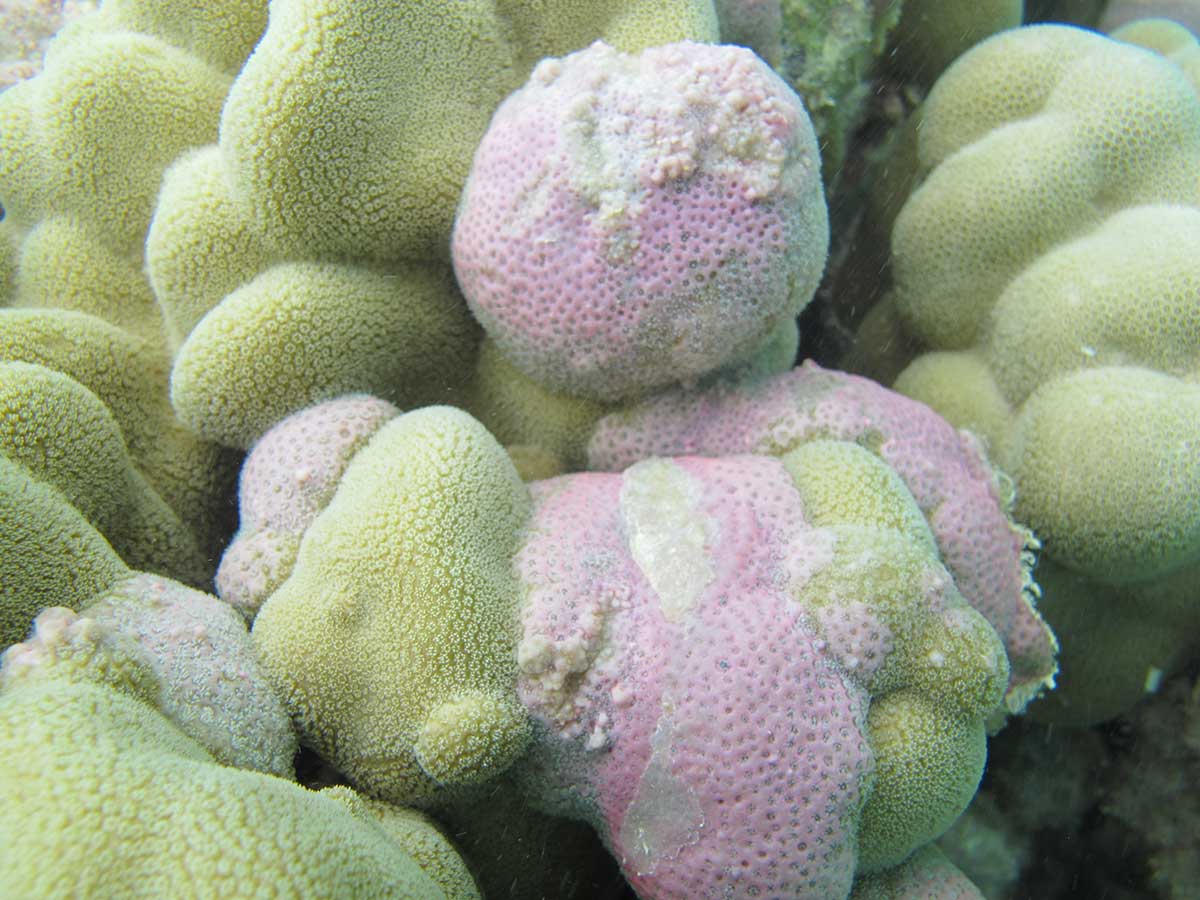
Researchers from Centre Scientifique de Monaco (CSM) will collect samples from two species of corals showing abnormal growths in Hawaiʻi’s Kāneʻohe Bay from November 30th until December 9th, 2018. The mission takes place as part of the Monaco Explorations campaign and will be hosted by the Hawaiʻi Institute of Marine Biology on Moku O Loʻe Island.
To read more, view the press release.
Monaco Explorations is on mission in Les Anses d’Arlet, Martinique from October 2nd – October 12th, 2018. Together with CNRS and Ifremer, we are working to capture turtles and collect data and samples. The information obtained helps with developing and implementing more effective threat mitigation measures. While we are working on the scientific project, Carbet des Sciences and our partners at Institut Océanographique are hosting local student groups participating in Martinique’s ‘Marine Educational Area Program’ to provide education and experience relating to turtle conservation.
The scientific project is conducted in partnership with local institutions and is part of the National Action Plan (NAP) for the Protection of Marine Turtles in Martinique (coordinated by the Office National des Forêts (ONF) and Direction de l’environnement de l’Amenagement et du Logement (DEAL) Martinique).
The objectives of the project are:
- To study the trophic ecology of the three marine turtle species (Green Turtle, Hawksbill, and Leatherback)
- Follow their population dynamics (capture-marking-recapture) on areas of development and laying
- Monitor the growth of immature individuals
- Assess the age/ aging rate of individuals in relation to the quality of the habitat
- Determine the energy expenditure allocated to each activity in relation to the characteristics of the habitat
- Identify the species consumed and their energetic quality
- Study the role of Green Turtles in the expansion, stabilization, or disappearance of Halophila stipulacea (invasive phanerogam) in Martinique and the French West Indies
- Study the impact of contaminants on the physiology of sea turtles
- Study the genetic diversity of immatures of each species on developmental areas
- Learn migration strategies according to oceanographic conditions

We are on mission in Les Anses d’Arlet, Martinique from October 2nd – October 13th, 2018. Together with CNRS and Ifremer, we are working to capture turtles and collect data and samples. The information obtained helps with developing and implementing more effective threat mitigation measures. While we are working on the scientific project, Carbet des Sciences and our partners at Institut Océanographique are hosting local student groups participating in Martinique’s ‘Marine Educational Area Program’ to provide education and experience relating to turtle conservation.
The scientific project is conducted in partnership with local institutions and is part of the National Action Plan (NAP) for the Protection of Marine Turtles in Martinique (coordinated by the Office National des Forêts (ONF) and Direction de l’environnement de l’Amenagement et du Logement (DEAL) Martinique).
The objectives of the project are:
- To study the trophic ecology of the three marine turtle species (Green Turtle, Hawksbill, and Leatherback)
- Follow their population dynamics (capture-marking-recapture) on areas of development and laying
- Monitor the growth of immature individuals
- Assess the age/ aging rate of individuals in relation to the quality of the habitat
- Determine the energy expenditure allocated to each activity in relation to the characteristics of the habitat
- Identify the species consumed and their energetic quality
- Study the role of Green Turtles in the expansion, stabilization, or disappearance of Halophila stipulacea (invasive phanerogam) in Martinique and the French West Indies
- Study the impact of contaminants on the physiology of sea turtles
- Study the genetic diversity of immatures of each species on developmental areas
- Learn migration strategies according to oceanographic conditions
It is believed that the exceptional longevity of coral is a hindrance to its ability to adapt to climate change. Is it doomed ? A study published in Sciences Advances by Centre Scientifique de Monaco holds out some hope … you can read that in French and English in La Gazette de Monaco.
